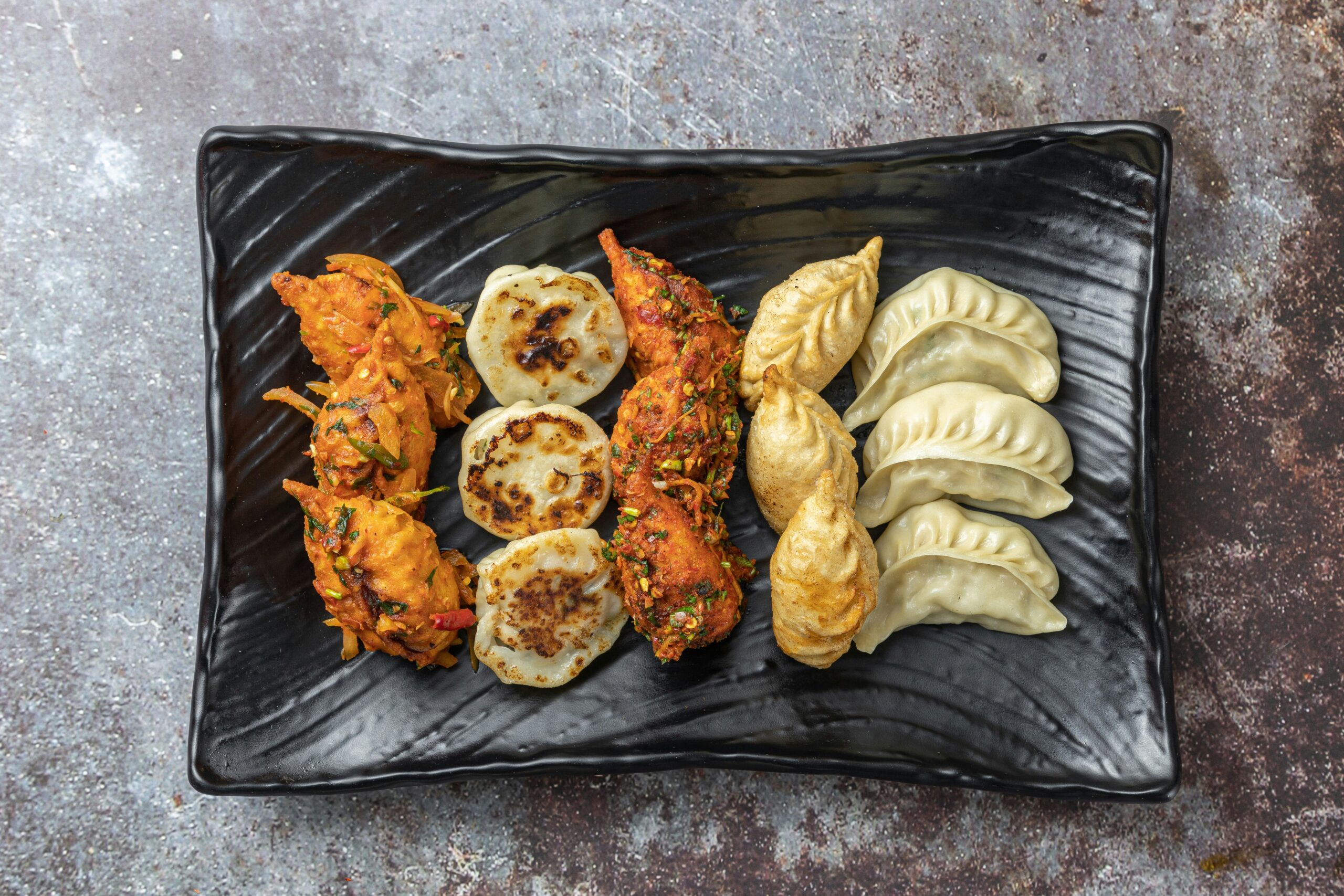
Momo, also known as originally Momocha, is more than just a dumpling; it’s a culinary journey steeped in history and cultural fusion. Often referred to as the king of dumplings, momo holds a special place in Newari cuisine and in the hearts of many across South Asia. Originating in the Kathmandu Valley, momo has grown beyond its roots, evolving into a dish that carries a unique aura, often likened to the allure of Shangri-La and the mystical charm of Shambala.
The Newari Influence: A Unique Steaming Method
In the Newari tradition, momo-making is an art passed down through generations. One of the key aspects of this is the steaming method, which is central to producing perfectly tender and juicy momo. The Newari community in Nepal has perfected this technique, ensuring the momo maintains its distinct texture and flavor.
However simplicity is key.
The preparation involves carefully folding minced meat originally water buffalo now chicken, or vegetables for a vegetarian or vegan friendly option with tofu , soy option into a thin dough wrapper. The wrappers are crafted to be slightly thicker than other dumpling varieties, creating the ideal balance between chewiness and softness. Once wrapped into a variety of shapes like crescent moons or round parcels, the momo are steamed in a traditional multi-layered steamer. This method allows the steam to evenly cook each momo, locking in the flavors while keeping the filling moist.
I love fresh mince meat marinated with simply salt and local chives called Chyapi, local bring the different the dish.
The Epitome of Versatility
Beyond the traditional steamer, variations like fried or pan-seared momo are also popular, demonstrating how this dish can be tweaked while retaining its core identity.
The Aura of Lhasa and the Influence of Tibetan Cuisine
The journey of momo wouldn’t be complete without acknowledging the Tibetan influence. In Tibetan culture, momo, or Lhasa momo, carries a deep cultural significance, symbolizing warmth and hospitality. The seasoning of these momo often incorporates garlic, ginger, and Tibetan spices, lending them a distinctive flavor profile that’s both comforting and exciting.
The Allure of Momo: More Than Just a Dumpling
Momo’s allure lies in its simplicity and the stories it tells through taste. The combination of aromatic spices, fresh ingredients, and precise cooking methods create a harmonious bite each time. Whether you enjoy them as a street food snack or as a main dish, momo continues to be a versatile favorite that brings together families, communities, and even travelers seeking the magic of Nepalese cuisine.
Shambala: A Culinary Sanctuary
The mystical essence of momo can be likened to Shambala, a hidden paradise in Himalayan folklore. For those who’ve experienced momo at its finest, there’s an almost spiritual connection to this dish—an experience that transcends the palate and offers a sense of warmth, belonging, and nostalgia.
The Growing Popularity of Momo in India, Europe, and America
Today, momo has transcended its Himalayan roots and found a place in the global food scene, especially in India, Europe, and America. In India, momo has become one of the most popular street foods, with variations found in nearly every region—from spicy tandoori momos in North India to steamed and fried varieties in the southern cities. The Indian palate has embraced momo, with its fillings ranging from traditional meat to innovative vegetarian options like paneer and mushrooms. Momo stalls and restaurants are a common sight in Indian urban areas, catering to a growing demand across all age groups.
In Europe and America, momo has gained traction as part of the growing trend for global street foods and authentic ethnic cuisine. The Tibetan and Nepalese diaspora has introduced momo to Western cities, where it has been warmly welcomed. Cities like New York, London, and Berlin boast momo joints that draw food enthusiasts eager to explore new flavors. In these regions, momo has been adapted with diverse fillings and sauces to cater to local tastes while preserving its traditional essence. The rise of food festivals, pop-up stalls, and specialty restaurants featuring momo is a testament to its growing popularity.
In conclusion, momo is not just a dish; it’s a reflection of the cultural tapestry woven between the Newar community, Tibetan traditions, and the broader South Asian diaspora. From the iconic steaming method to the versatile fillings, momo continues to reign supreme as a beloved dumpling with an aura as enchanting as the lands from which it hails—now captivating taste buds across continents.
Article reproduced with the kind permission of Binod Baral, Tourism & Business Advisor of Nepal | Honorary Goodwill Ambassador. Follow his Food Diplomacy newsletter on LinkedIn here: https://www.linkedin.com/newsletters/food-diplomacy-6975128067014819840/

Share this Story
